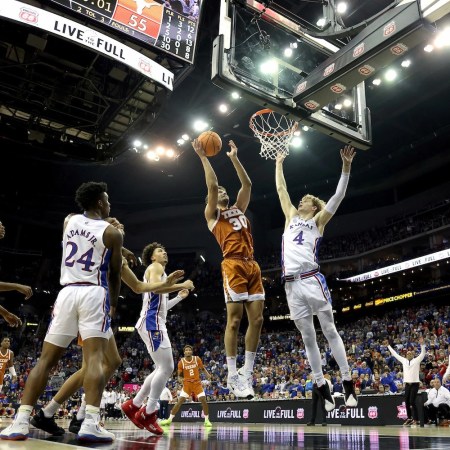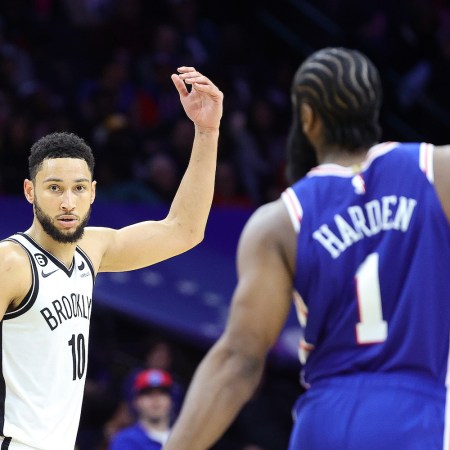For the better part of the last decade, the Grizzlies gritted and grinded — and were phenomenally successful in doing so. These teams were brutalist and brutal; their defining aesthetic was their contempt for aesthetics. While the rest of the league grew more beautiful, Memphis let Zach Randolph and Marc Gasol throw their round meaty haunches around in the post. They played scruffy dad-bod basketball as if their uniforms were hand-cut jorts and their bench were the battered flatbed of a Ford F-150.
Today’s Memphis Grizzlies will teach you how to fall in love.
Whereas the Grit and Grind Grizzlies dominated with brass-knuckle physicality and force, the 2020 Grizzlies have played fast and confident and with female-tendencies on their way to a surprising 24-24 record. Consider Ja Morant, their soon-to-be-superstar rookie point guard who was born to be GIF’d. He combines the liquid grace of Kyrie Irving with the bounciness of Russell Westbrook; he breaks free though invisible crevices before soaring to the rim, flying like there’s not a star in heaven that he can’t reach. More than anything, Morant at this point resembles Peter Parker learning to become Spider-Man, gradually coming to grips with the true breadth of his powers. Even his jumper, a weakness at Murray State, has become a relative strength — he’s hitting nearly 40 percent of his threes (admittedly on low volume) and over 80 percent of his free throws.
In the last month, Morant has ratcheted up both his playmaking and his efficiency while lowering his usage rate. He has been spectacular all season, but now he’s harnessing his raw athleticism and finding ways to funnel it into positive basketball plays. In particular, he has become more adept as a passer. Since Morant’s freshman year of college, he has been capable of slinging live-dribble passes with either hand (a hallmark of great passers), which is the swing skill that has separated him from the graveyard of Dennis Smith Jr. type-beat busts who only could jump high. His highlights —his behind-the-back passes, his dunk attempts, that one time he somehow did both at the same time — are brain-melting, but it’s the increasing mastery of the relatively workaday that has made him a star.
Although Ja Morant is the charismatic face of the Grizzlies’ rapid rebuild, he’s arguably not even their best player. Jaren Jackson Jr., their sophomore power forward, is the purest distillation of the modern big man. At 6’11, he boasts a 7’4 wingspan, allowing him to stonewall shots at the basket while remaining fleet enough to hold his own in space. Simply put, he will snatch the ball — and your pride. Jackson projects to be an elite defender, however, he’s perhaps more interesting as an offensive weapon. To be fair, he lacks the shot-creation ability to be an offensive hub on his own, but he’s the ideal secondary option. Equally adroit as a roll-man or a shooter, he provides Morant with an all-court safety valve. More, Jackson is no mere spot-up shooter; rather, he runs off of screens and cans step-back triples. In essence, he shoots like peak Ray Allen and blocks shots like prime Shaq. The arc of basketball’s history is long, but it bends towards Jackson.
While Morant and Jackson dominate most of the spotlight, De’Anthony Melton and Brandon Clarke are perfect complements. Two immensely productive college players, Melton and Clarke were overlooked because of concerns about how they would fit in the NBA. Melton, an undersized off-ball guard with an iffy jumper, has fashioned himself into one of the league’s most active and threatening defenders; his quick feet, long arms and unquenchable thirst for blood generate 5.1 deflections per 36 minutes, the second most in the league. On offense, he earns his bones by making quick decisions before defenses can react. Plus-minus is a noisy stat, but his net rating of +16.6 is bonkers all the same. Clarke was an All-American at Gonzaga last year and plays like an older, intermittently-fasting Zion Williamson. Clarke fell to the 21st pick in this year’s draft because there’s no track record of success for 6’8 centers who turn 23 before their rookie season. Still, there’s also never been a center like Clarke who wields quite literally one of the best floaters ever and scores this efficiently as a rookie.
The Grizzlies’ turnaround is a testament to the idea that players should be allowed to be themselves. Rookie coach Taylor Jenkins has constructed a wide-open fluid attack that the players can freely inhabit. Tautological as it sounds, Memphis proves that the best way to build a good basketball team is to get good basketball players. Laborious multi-year development works, but isn’t it less complicated to grab an alleged low-ceiling player who’s so good he doesn’t need much improvement? There’s a reason that Clarke is on pace to record the highest true-shooting percentage of any rookie ever while a raw prospect like Romeo Langford is a Maine Red Claw. The Grizzlies’ core four have the same idiosyncrasies and flaws today that they did in college (Morant is an inattentive defender; Melton and Clarke are reluctant shooters; Jackson can’t stop fouling and sighs gustily every time he has to box-out), but they thrived in college and the NBA because their assets so eclipsed their deficits.
The draft — and team-building in general — is often presented as a crapshoot, but the Grizz have made it seem effortless. Their closest contemporary analog is probably the 76ers, who took this draft-centric rebuild to the mainstream with their infamous Process, a multi-year ordeal that entailed galaxy-brained manifestos, very normal collars, and a criminal amount of Hollis Thompson. The Sixers and Sam Hinkie were ultimately successful, but it was craven and inefficient and their devotion to “accumulating assets” (dork for “getting stuff”) has created a roster that’s nearly as woebegotten as it is talented. The Grizzlies, in contrast, have swiftly vaulted themselves into the playoff picture on the strength of choosing obviously good players who the rest of the league somehow thought would be bad; this is reductive, but the Grizzlies have so plainly “won” the last two drafts that Draft Twitter audibly moans and has to loosen their neckties whenever they look at the College Basketball Reference pages of the Grizzlies’ recent draftees.
If there’s a lesson to be learned from the Grizzlies, it’s that the most available path to relevance isn’t to torpedo season after season until you get Joel Embiid and Ben Simmons, but to scoop up the studs who are hiding in plain sight. The Process can work, but really, the Grizzlies demonstrate that the ultimate trust should be placed in the results.
This article was featured in the InsideHook newsletter. Sign up now.






















